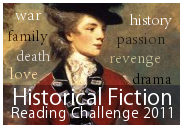[amazon_image id=”B000BLNPIW” link=”true” target=”_blank” size=”medium” class=”alignleft”]More Than You Know: A Novel[/amazon_image]Beth Gutcheon’s novel [amazon_link id=”B000BLNPIW” target=”_blank” ]More Than You Know[/amazon_link] is the parallel story of Hannah Gray, reflecting on her first love in Dundee, Maine, and Claris Osgood Haskell. Hannah fell in love with wild boy Conary Crocker, but it’s clear something didn’t work out as she begins her narrative sadly reflecting on how she married Ralph, whom describes as “a good man and I loved him, but he wasn’t the great love of my life, and he knew it, thought we never spoke of it” (8). Hannah is reading over a diary she kept as a teenager during the time when she met and fell in love with Conary. As a teenager, Hannah developed an interest in the Haskell family on Beal Island. One day, Danial Haskell was murdered with an ax, and though his daughter Sallie was tried twice for the crime—one ended in mistrial and the other in acquittal—she was never found guilty, and no one was imprisoned for the crime, though some suspicion also fell on the Haskells’ boarder Mercy Chatto.
The Haskells’ story is told in third person, while Hannah herself narrates her own story. The two stories intertwine as both Conary and Hannah see a ghost associated with the Haskells both on the island and in the schoolhouse the Gray family is living in. The schoolhouse originally stood on Beal Island, but was moved over to the town of Dundee. The island is uninhabited when Hannah begins her story.
The Maine setting is beautifully evoked, and the Haskell ax murder was clearly influenced by the Lizzie Borden story—many of the elements of the two stories are similar. I found the characters hard to sympathize with, and I felt more like I was hearing gossip about a local family I barely knew than being let into the lives of people I cared about. I expected the two storylines to mesh more tightly by the end of the novel, but I never felt they did, and Hannah never resolved her curiosity about the murder (though the reader does learn what happened). The one connection I did make was to wonder if Gutcheon showed us the end of the “what-if” story. If Conary and Hannah had been able to marry, would they have been happy together? Or would they have ended up more or less like Claris and Danial Haskell? In the end, it felt incomplete, as though some connection I was supposed to make had been withheld from me as it had been from Hannah. It’s a pity because it started out strong, and I thought I would like it in the end, but I found it left me feeling kind of hollow. But other people clearly liked it, and if you’re thinking about reading it, please read their reviews.
Rating:
















